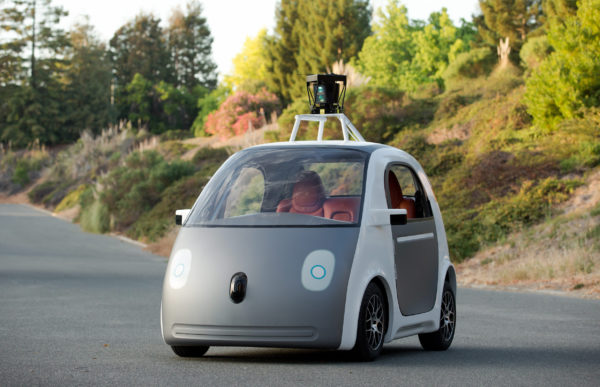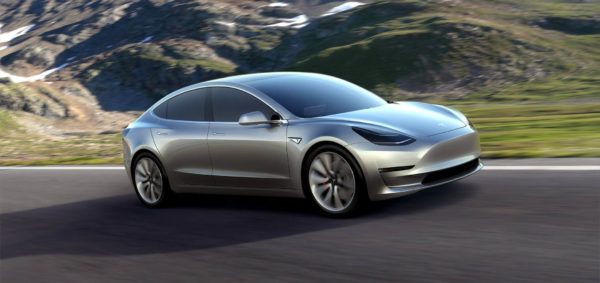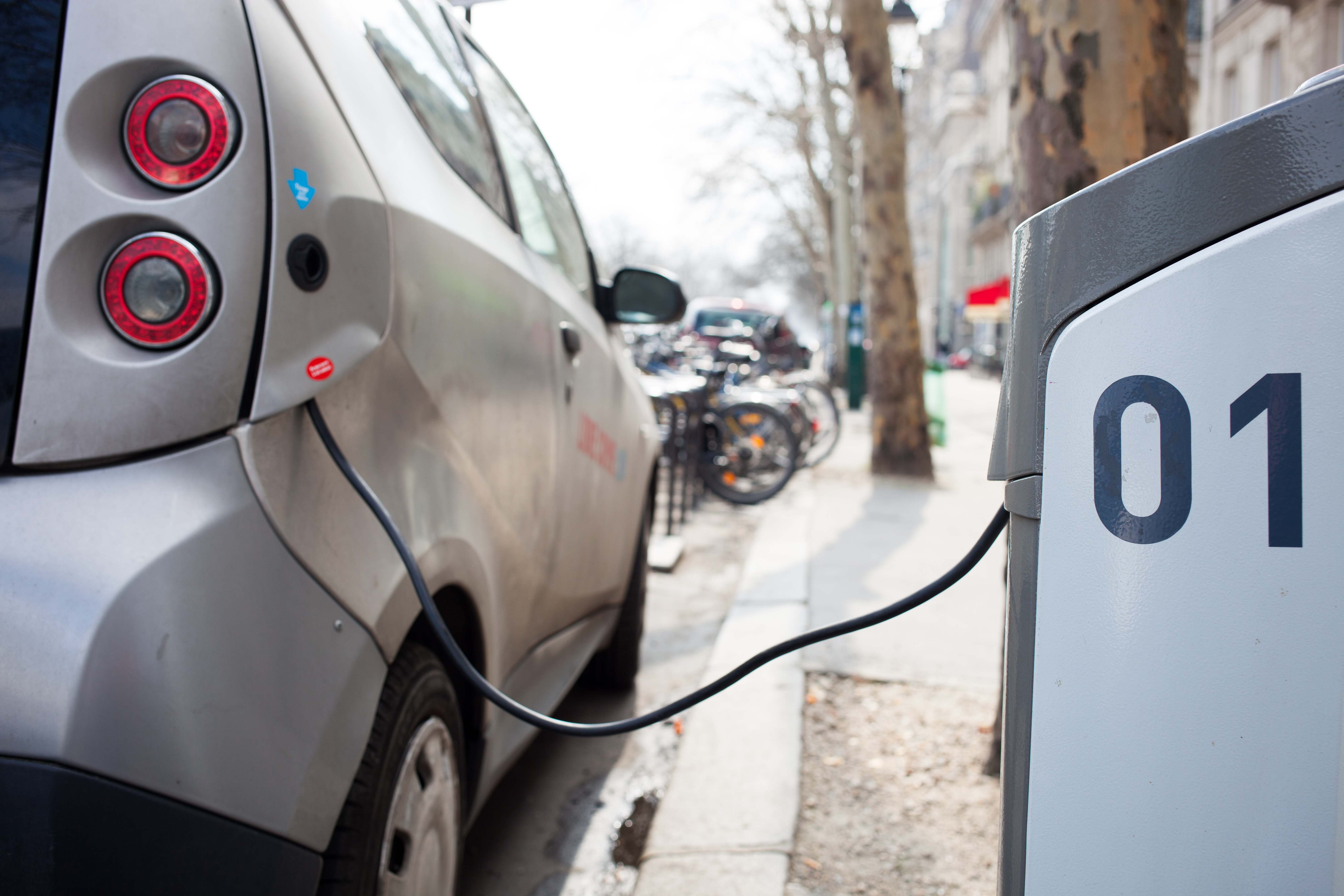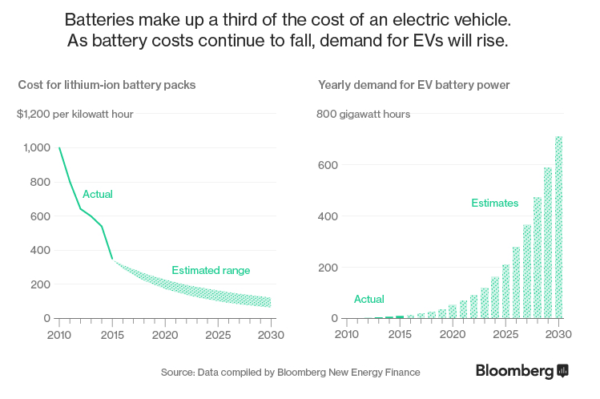What’s the future of the car?
Electric battery-powered, self-driving and even solar-powered: a new generation of vehicles is set to transform the roads

As the world moves to act on climate change and air pollution, does the traditional car have a future?
You might say they don’t, and a bike, walking or public transport (preferably electric) is fine.
But some people feel they need their cars, or enjoy the freedom and convenience of driving. Luckily for them, the car industry appears to be on the cusp of a meaningful shift towards low-carbon, car-sharing and smart mobility, as it’s called in the trade.
And this new generation of automobiles might spread faster than previously expected challenging oil demand over the decades to come – and defying largely oil industry-led predictions.
This comes down to a bunch of factors: battery costs are plummeting, making electric vehicles (EVs) more affordable; the aftershocks of Dieselgate; a growing awareness of dangerous air pollution; the Paris climate agreement and momentum towards taking climate change seriously; and the tech arms race eroding the power of incumbant interests, meaning powerful ‘new entrant’ firms like Google, Apple and Dyson are getting involved.
It’s worth bearing in mind that even cars that run off clean energy or those that are extremely fuel efficient have a substantial carbon footprint because of the materials and production processes involved in making them.
Environmentally aware consumers may consider whether they want to buy new in the first place. Or at least consider whether the car is made of recycled components or made to be recycled. Some manufacturers design their cars to be taken apart and have the components reused and recycled into new cars, such as Renault.
So, from EVs to solar cars – here’s where we are at now, and where we might be in the decades to come:
EVs: Now
For people looking at buying an EV right now at an affordable price it’s not impossible – seriously.
The Nissan Leaf, which is the most popular electric car in the UK, costs about £16,500 new if you lease the battery, but starts from about £7,000 second hand – as with all ultra low emissions vehicles people can get a government grant which reduces the price, making EVs £4,500 cheaper.
The Leaf has a range of about 80-100 miles for the 24kWh battery and around 150 miles for the new 30kWh unit.
For EVs with a longer range, but at an ‘affordable’ – compared to the elite level Teslas – price of around £20-25,000, you might have to wait a little while.

Actually not that long – as you may have heard Tesla’s Model 3 is already taking refundable deposits and aims to get the cars shipped to customers in 2017. It has a range of 215 miles, says Tesla, and will cost from around £24,000 in the UK.
The Model 3 had people queuing around the block from car dealers, and generated over a quarter of a million orders in just a few days.
276k Model 3 orders by end of Sat
— Elon Musk (@elonmusk) April 3, 2016
Nissan is planning to release a re-booted Leaf – differing reports have the date down as 2017 or 2018 and the range at somewhere between 200–250 miles.
And Chevrolet’s 200-mile range Bolt – the follow up to its Volt – will be going into production later this year in the US, but is unlikely to be sold in the UK to start with.
From a climate point of view, obviously it matters what you charge up with – whether you have renewables only electricity supplier; your own renewable source such as solar roof panels; or if you’re charging it off an energy mix including coal and gas.

EVs: The future
There could be many more EVs on the horizon. VW and a host of other car companies – including Peugeot, Mercedes-Benz and Audi – have said that they are pushing EVs in response to the Dieselgate scandal.
Apple and Dyson – both iconic brands not traditionally in the auto market – are also known to be working on their own versions of the electric car.
Indeed as Tesla’s experience has shown it’s possible EVs could boom. An analysis by Bloomberg New Energy Finance (BNEF) suggests that could wreck havoc with current industry/OPEC forecasts for oil demand.
On the whole this is because of the plunging prices of EV batteries, shown below, in a way that would mirror the takeup of solar as prices plummeted.

Bearing in mind lithium-ion battery costs have fallen 65% in the past five years, BNEF reckons that by 2022 “the unsubsidized total cost of ownership of [EVs] will fall below that of an internal combustion engine vehicle”.
It’s perhaps not surprising that electric cars are surpassing expectations, though. Previous estimates were partially set by the oil industry, which has been shown to be lobbying against transport policies connected with EVs in Europe and the US.
Plug in hybrids (PHEVs)
PHEVs have dual engines – with a small battery typically coupled with a small 1 to 2 litre petrol engine.
PHEVs – such as the Mitsubishi Outlander and BMW i3 – have a longer range than most current electric vehicles.
With the BMW i3 PHEV when the electric charge runs out at up to around 100 miles – long enough for errands or commuting – they can switch to their small petrol engine, almost doubling their range.

The Outlander PHEV, meanwhile, boasts a combined range of around 500 miles with the electric and petrol engines.
The Outlander, which is the most popular PHEV in the UK costs from around £32,000 new and £18,000 second hand. The BMW i3 – which is built so its components can be recycled and reused and has good reviews from the auto press – costs around £33,000 new (with the ‘range extender’ petrol engine) and upwards of £20,000 second hand. PHEVs get a £2,500 government grant.
People can get regular hybrids, such as the ubiquitous Toyota Prius, from about £3,000 second hand and they are very reliable. However, they use petrol to charge the battery (unless already charged and driving slowly) rather than running primarily off the battery and only having petrol as back-up.
PHEVs: The future
PHEVs have some future-proof features. The downsized petrol/diesel engine could be replaced by a hydrogen fuel cell at some point in the future, when hopefully there is more infrastructure to support this.
Self-driving cars: Now
The Tesla 3 has much-hyped self-driving features (you may have to pay extra).This includes the ability to ‘summon’ your car into a parking space. Elon Musk has said the aim is that you can recall your car to where you are to drive it somewhere. Also, there’s the autopilot once you’re in the car, as long as there are road lines to navigate to.
But cars that completely self-drive are somewhat controversial, not least because the press coverage seems to highlight when they crash. In fact, there has only been one crash of the Google self-drive prototype that was not caused by a human, and it was more of a low-speed scrape or a bump and no one was hurt.
But the point of self-driving cars is that they could be safer because they remove human error from the equation, potentially eradicating 80% of accidents.
They are still ‘learning’ how to interpret their surroundings – and share the knowledge with the network – but collectively self driving cars have decades of driving experience.
There is also the advantage of increased mobility for elderly or disabled people
How environmentally-friendly they are is a bit controversial. One study says greater fuel efficiency, car sharing and convoy driving meaning carbon emissions could be up to 90% less than a current petrol car. Whereas another study found that fully automated cars are essentially too easy to travel in and they would be used so much that this cancels out the environmental benefits.
There are also concerns around privacy, cyber hacking and job losses.
Self-driving cars: The future
Driverless cars, which are already being tested in California, will be tested on the UK’s motorways from next year.
Apart from Google, several other firms are trying to get in on the action. Apple’s being very secretive about its plans for an electric driverless car, Uber is doing the same for its robot taxi car. Toyota, Mercedes-Benz – and Google – say they aims to be selling driverless cars by 2020.
Beyond that, the Institute of Electrical and Electronics Engineers, say the majority of cars bought and sold by 2040 will be self-driving. Likely by then all self-driving cars will be electric or hybrids.
Solar cars
They’re not really a thing, sadly. Not now, and likely not in the future in any significant way. This is mainly because of physics.
There have been some highly speculative concepts such as Ford’s C-Max Solar Energi but nothing came of it, and Ford’s press office confirmed they had no current plans to take solar cars forwards to production.
Chinese solar tech manufacturer, Hanergy, stated its intention last February to launch five solar cars models later in the year. It ended up launching a concept solar car at a trade show in October 2015, but it could be quite a while before the car could go into production.
It turns out the car is mainly an electric car with a range of around 180 miles – the purely solar range, from a four hour charge, is only around 30 miles.
The problem is that there just isn’t enough space on the roof for a regular car – unlike a super-aerodynamic and uncomfortable shuttle – for a solar panel to properly power it for any significant distance.

Hydrogen cars: Now
Hydrogen cars work by mixing hydrogen with oxygen in its fuel cell to generate power – and have no emissions except for a little h2o. But with only a small handful of charging points there is no real infrastructure for hydrogen car charging for consumers in the UK – as the Guardian’s Adam Vaughan explains.
Another challenge is the cost of the hydrogen fuel cell, which is rather steep as it’s a new technology. You can already buy two hydrogen cars but they are on the elite end of the spectrum, with the Toyota Mirai (meaning: future) at £66k and the Hyundai ix35 at £53,000. Both will take you over 300 miles on a tank of hydrogen.
Hydrogen cars: The future
It doesn’t look clear so early on, but if infrastructure improves and the hydrogen-powered cars are bought by fleets this could be a decent toe-hold to reach from. Hydrogen pumps are about four times the cost of diesel/petrol pumps so infrastructure might be slow on the uptake.
Despite Toyota leapfrogging lithium-ion batteries and betting hydrogen will be the next big thing, Goldman Sachs analysts think fuel-cell cars will remain a niche proposal until at least ten years from now.
It remains to be seen whether the fall-out from Dieselgate – or indeed the Paris Agreement – will ramp up infrastructure and takeup of hydrogen cars.
To sum up:
People used to putting an oil-based substance in a car, could easily think of cars advances as a shift towards different drive trains, like EVs. But something much more exciting and radical is going on.
At the moment 95% of cars are just parked somewhere, but in the future cars might not only be run on renewables, but also the structure of how we share cars so they are in use almost all of the time will mean a big shift away from ownership. This could mitigate some of the massive demand for new vehicles.
Oh, and when you’re not cycling or walking you might be driven around by an on-board robot with multiple sensors that can see through obstacles to hazards – no big deal.




